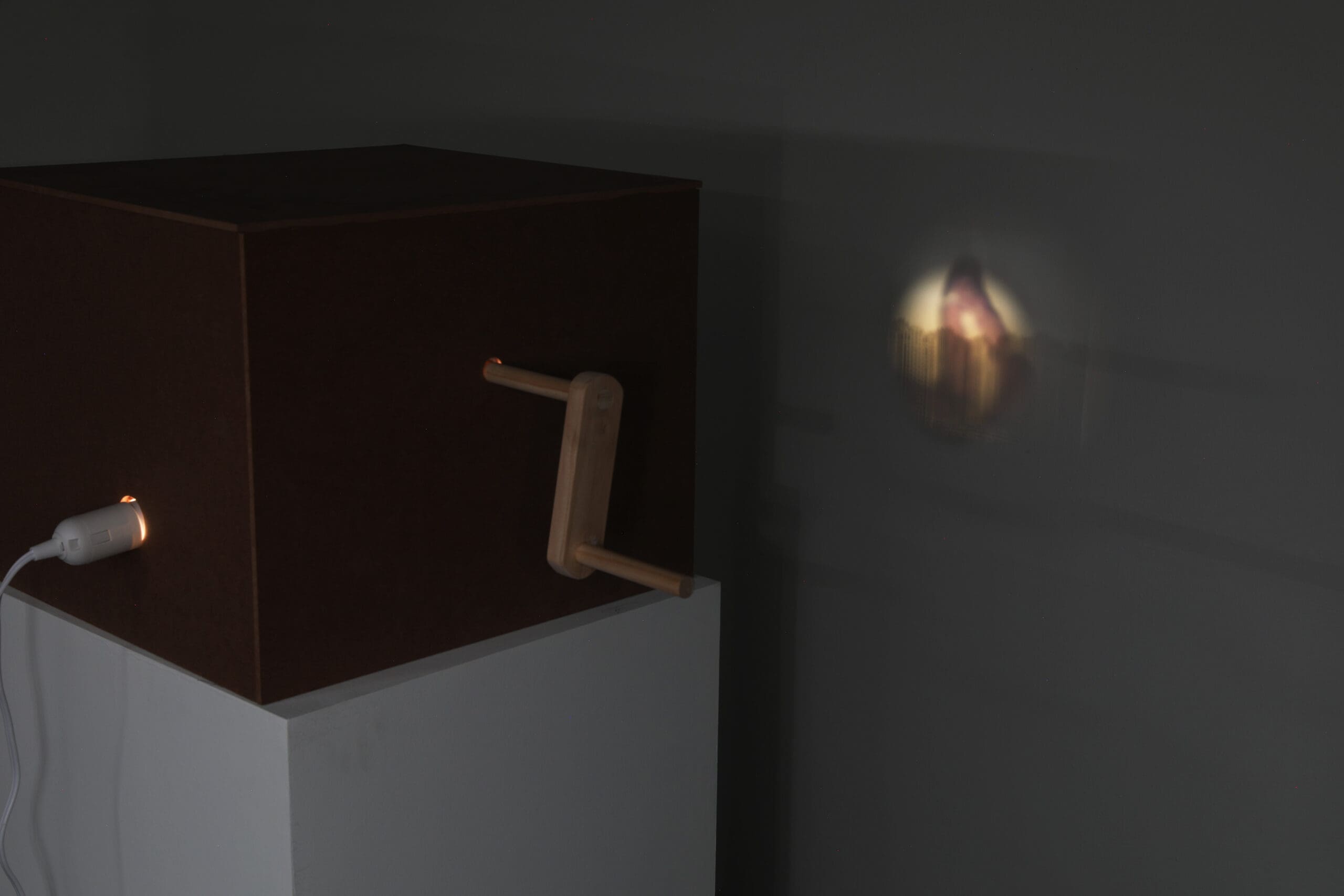
Tell me about your pathway to the MFA EDA program. Where did you grow up? What did you study in college and/or what was your professional life before graduate school?
I was born and raised in China. I got my BA in Journalism at Northeastern University in China in 2015, and then I enrolled in the School of the Art Institute of Chicago, majoring in photography. After I left Chicago, I did two artist residency programs, one in Tokyo, Japan, and the other in Changsha, China. I also worked as an instructor at the Power Station of Art in Shanghai.
Why did you want to pursue an MFA? Why did you choose Duke’s program in Experimental and Documentary Arts?
During my residencies I met many professional artists who put years of effort into their projects. I usually complete my work very quickly. I don’t think that’s a bad thing—everyone has different working habits and for me, making art is like a game between myself and time. I wanted to know what it would be like to finish a longterm project. Pursuing the MFA at Duke was a way of forcing myself to spend two years diving deep into a single project.
The MFA EDA program was also an opportunity to do interdisciplinary research, which is an essential element of artistic work and also a skill that influences how far an artist can take their work. Compared with Shanghai or Chicago, Duke’s MFA EDA program was the best place for me to develop the patience and find the research resources I needed to complete a major work of art.

How did you focus your work while at Duke? Were there surprises? Unexpected collaborations? Challenges?
I entered the program intending to concentrate on photography. However, that didn’t mean I was limited to photography. It meant that as the themes of my work deepened, my approach expanded to include installation art, sculpture, and other media. I think that’s the experimental part of Duke’s program.
Yes, unexpected collaborations did develop along with my work. For example, I did an independent study with art history professor Stanley Abe about the magic lantern, which is an important part of my thesis project, Manual City. I read about the history of the magic lantern and how other artists have adapted it. I found that as a projection device that could create strange ghosts and apparitions, magic lanterns were used by the church and the ruling classes to trick and oppress their people. I also worked with James Budinich, a Ph.D. student in Duke’s music composition program, on the music in Manual City.
“This project offers condensed, miniaturized, and fragmented images of the rapidly evolving Chinese city landscape. An imaginary, isolated city is represented by landmarks and scenes from Chinese landscapes that jostle for space, including ghost cities, the Oriental Pearl TV Tower, factories from the northern hinterlands, a statue of Mao, and other metaphors.
“The symbols employed engage with social issues such as censorship, environmental pollution, greed, class divide, and personality cult. Together they convey a sense impractical illusion and a nostalgia that permeate contemporary China.”—From the Artist’s Statement
Please introduce your thesis project.
Manual City is a room-sized installation inspired by Plato’s Cave. It is made from LED light, transparency films, music kits, projectors, a wooden box, and other found objects. In a black box space, three magic lanterns project circular spots of light on the wall. A light device in the corner creates a mysterious plot by reflecting and refracting objects and light. At first, I played with the materiality I projected, then I introduced manipulated music kits so the spectator could activate and interact with the projections at different speeds. The images on the wall fluctuate between clear and faint, unfamiliar and recognizable.
In addition, I created a zine that discusses the materials and metaphors that went into the installation. The installation at Duke is my second version of this project. The first was created in 2017.

What motivates you to do this work?
My main inspiration as an artist is light, which is for me like a piece of evidence, a way to show different manifestations of reality.
Manual City was inspired by Plato’s Cave allegory and by the idea of the gatekeeper. In his allegory, Plato considers a group of prisoners who spend their life bound in chains in a cave. The only thing they can see is the play of light and shadows on a wall. They never see the torches and objects behind them that create the show, so naturally they assume that the shadows are the ultimate reality.
The concept of a gatekeeper was introduced into the theory of communications by Kurt Lewin in 1943 to describe the way information is filtered by the media before it is disseminated to the public. These figures, who never meet us or speak with us, determine much of what we see, what we listen to, and how we think about the world. Through a process of filtration and censorship, they are creating a projection of reality that is much like the shadows in Plato’s cave.








Do you have a goal, or something you hope people will take away from your work?
I see Manual City as a fairy tale for adults. The magic lantern looks like a toy, but when taken apart, it has a deeper meaning.
I would like people to think the process of making this allegory. How does it resemble the real world that we live in? Who makes up that world for us?
Duke Students & Employees save more!
